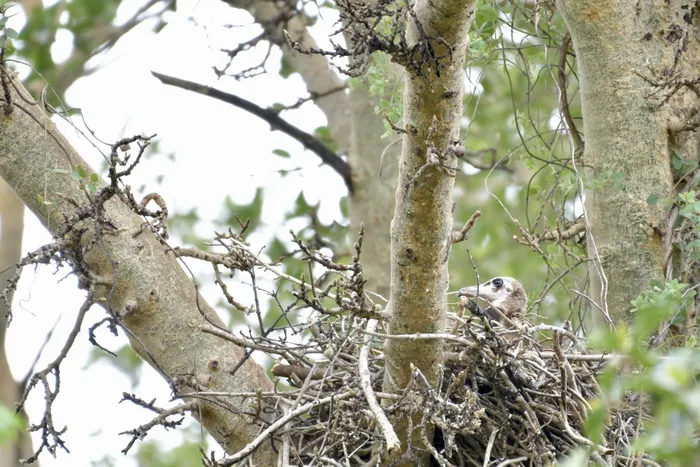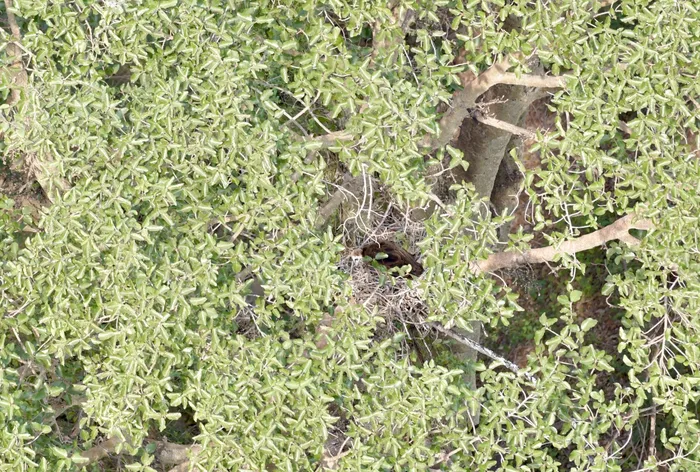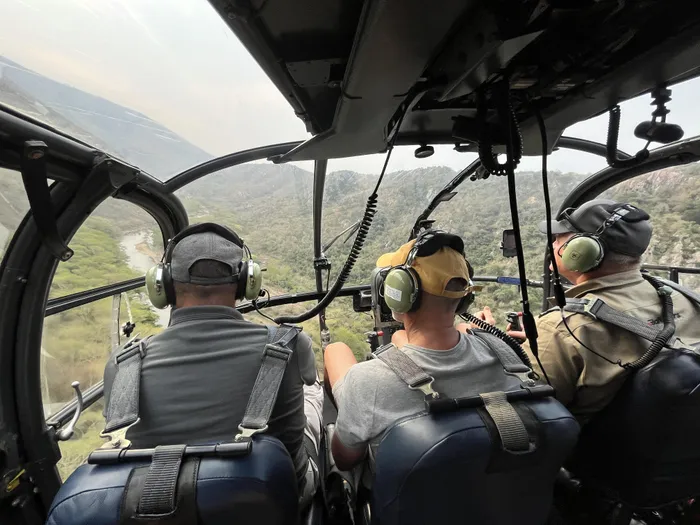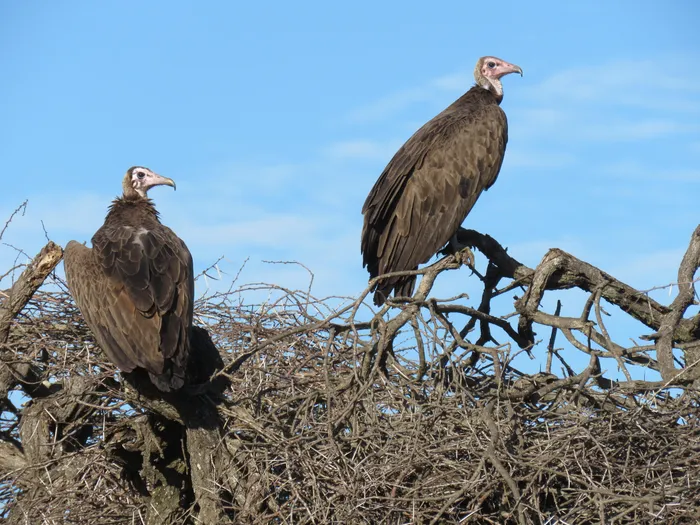Bird breakthrough: Rare hooded vulture nest in KwaZulu-Natal

History in the canopy: The first hooded vulture nest was spotted in Zululand.
Image: Wildlife Act
CONSERVATIONISTS have confirmed the first active hooded vulture nest recorded in KwaZulu-Natal, marking a major conservation milestone. The rare find has offered a glimmer of hope for one of the continent’s most endangered bird species.
The discovery was made recently during the 2025 Zululand Vulture Project Aerial Survey, a collaborative initiative involving Wildlife ACT, Ezemvelo KZN Wildlife, The Bateleurs, a volunteer pilot conservation non-governmental organisation, and several supporting partners.
The nest, located in northern Zululand and containing a healthy chick, also represents the southernmost breeding site ever documented for the species — expanding its known range and deepening scientific understanding of its breeding behaviour.
The hooded vulture (Necrosyrtes monachus) is classified as critically endangered, with an estimated 50–100 breeding pairs left in South Africa. Unlike its larger cousins, it is smaller, shy, and more elusive, making its nesting behaviour especially difficult to document.
That’s what makes this discovery so significant, according to conservation teams who have spent years attempting to confirm the species’ presence in the province.
Vultures are among the most threatened bird species in South Africa, and KwaZulu-Natal remains a critical region for their survival, said Brent Coverdale, Ezemvelo KZN Wildlife Animal Scientist who focuses on mammals and birds.

The rare hooded vulture nest was recently discovered in Zululand.
Image: Wildlife Act
“The results of this survey highlight both the challenges and the opportunities we face. The loss of White-headed Vultures is a sobering reminder of what can happen if threats go unchecked, while the confirmation of a hooded vulture nest offers hope and renewed urgency for protecting these birds and the ecosystems they support," said Coverdale.
The survey, conducted by helicopter over vulture habitat in Zululand, takes place every five years and is designed to complement Ezemvelo’s fixed-wing surveys and Wildlife ACT’s ground-truthing efforts.
This year’s operation was coordinated by Chris Kelly and Anel Swart of Wildlife ACT, along with Coverdale, and supported by The Bateleurs, Shiptech, Ford Wildlife Foundation, Dry Creek Foundation, Briandez Legacy Trust, and the Happy Hollow Foundation.

The discovery of a rare hooded vulture nest was made recently during the 2025 Zululand Vulture Project Aerial Survey, a collaborative initiative involving Wildlife ACT, Ezemvelo KZN Wildlife, The Bateleurs, a volunteer pilot conservation non-governmental organisation, and several supporting partners.
Image: Wildlife Act
The team recorded a slight increase in ;appet-faced vulture nests within Hluhluwe-iMfolozi Park, and modest growth in some African white-backed vulture colonies. But the headline discovery, a single active hooded vulture nest with a chick, stood out as a rare and historic moment.
Steve McCurrach, Director of The Bateleurs, said being part of the team that confirmed the nest, was a powerful reminder of why the efforts matter.
“We are always ready to provide the often vital aerial support, to any legit conservation and environmental care programs”.
According to the Zululand Vulture Project website, the hooded vulture, often overshadowed by larger scavengers, plays a vital role in ecosystem health. It is an obligate scavenger, feeding almost exclusively on carrion, a behaviour that helps curb the spread of diseases such as rabies, anthrax, and botulism.
Smaller than other vulture species, it weighs just 1.5 to 2.6 kilograms with a wingspan of about 1.6 metres. It breeds slowly, typically laying just one egg per year, and its chicks remain dependent on parental care for up to seven months. Little is known about their nesting habits, making each new observation critically important for conservation planning.
“Vultures are the underappreciated custodians of ecosystem health, said Swart, Wildlife ACT’s Species Conservation Director.
“Without them, carcasses take longer to break down, diseases can spread more easily, and the natural balance of the environment begins to unravel. Without them, the consequences ripple far beyond the animal kingdom and into human health and the economy, especially in a landscape heavily dependent on the natural environment,” she said.

Smaller and shyer than other vulture species, an adult hooded vulture weighs between 1.5 and 2.6 kg with a wingspan of around 1.6 metres.
Image: Wildlife Act
Despite KwaZulu-Natal being a stronghold for several vulture species, it remains one of the most dangerous regions for them. According to the Zululand Vulture Project website, widespread poisoning — both intentional and accidental — remains the leading cause of vulture deaths.
Deliberate poisonings were often linked to the illegal trade in traditional medicine or predator control, while accidental deaths stem from veterinary drugs or ingestion of lead from ammunition. In recent years, entire breeding clusters have been wiped out.
The confirmed hooded vulture nest was first suspected by Kayleigh Huysamen, Wildlife ACT’s Educational Content Specialist, on her family’s property in northern Zululand. After reporting the activity, she and her family committed to monitoring the site and supporting conservation efforts on the ground.
“It feels like an incredible privilege to have this happen so close to home,” Huysamen said. “We’re deeply committed to safeguarding the site. Protecting this nest is about giving the species a real chance to recover.”
The case illustrates the critical role that private landowners and local communities play in vulture conservation. Many active nests fall outside of formally protected areas, making collaboration with farmers and landowners essential for long-term success.
The discovery also supports South Africa’s newly gazetted Biodiversity Management Plan for Vultures, which outlines the national strategy for halting vulture declines and supporting population recovery. Wildlife ACT’s Chris Kelly and Coverdale were among the contributors to the plan, and both continue to work on its provincial implementation.
Members of the public are encouraged to report any vulture nesting activity to Project Vulture via https://projectvulture.org.za/report-vulture-sighting/. The reports help researchers monitor populations and respond to potential threats in real time.